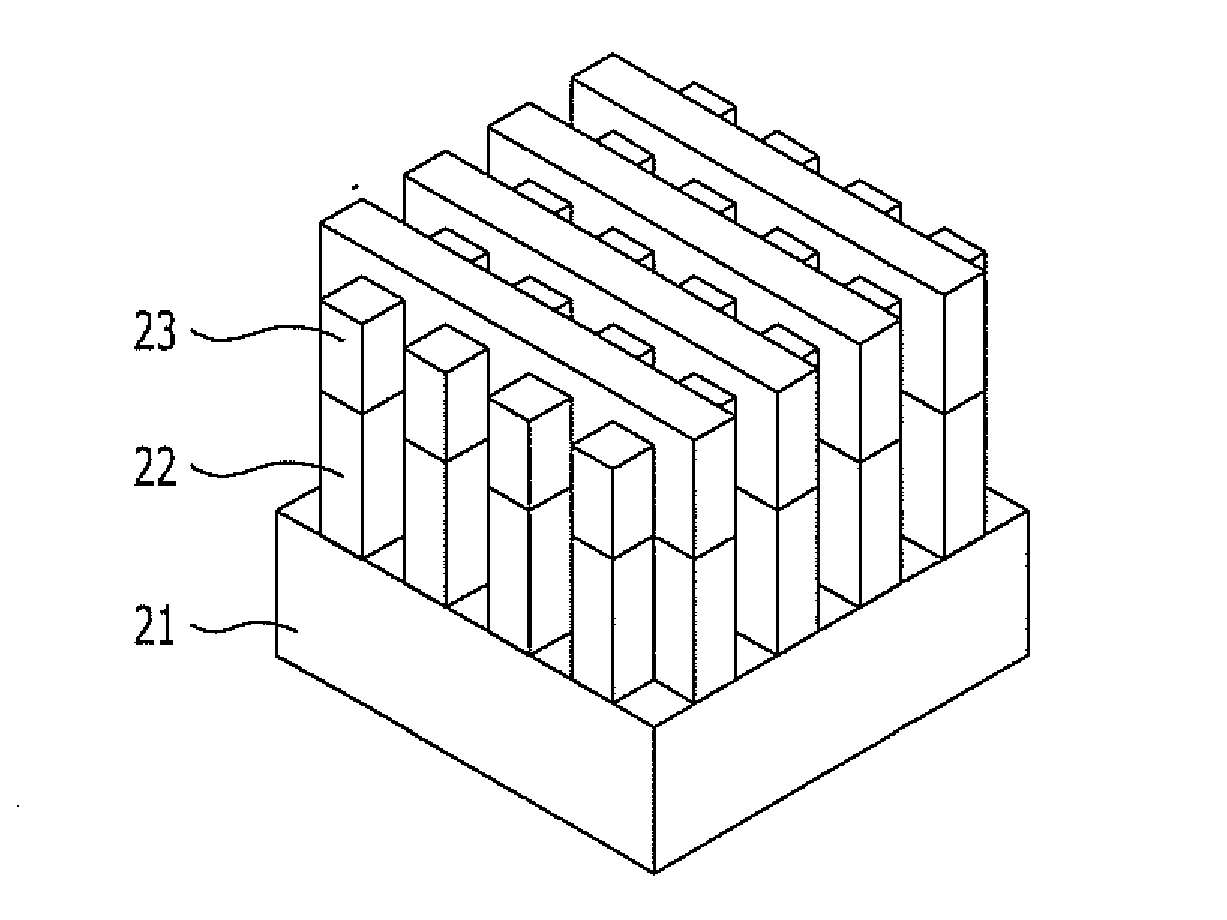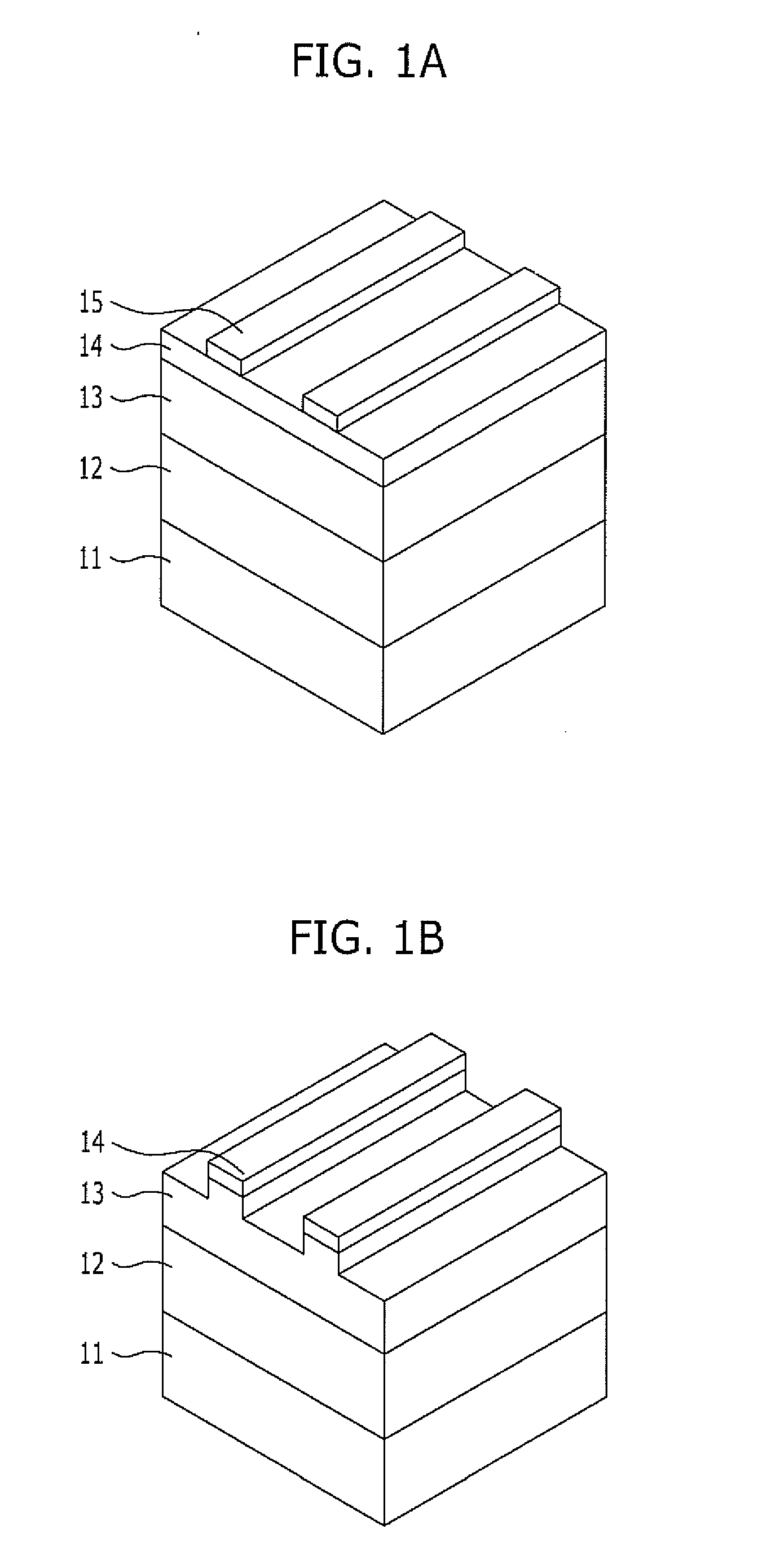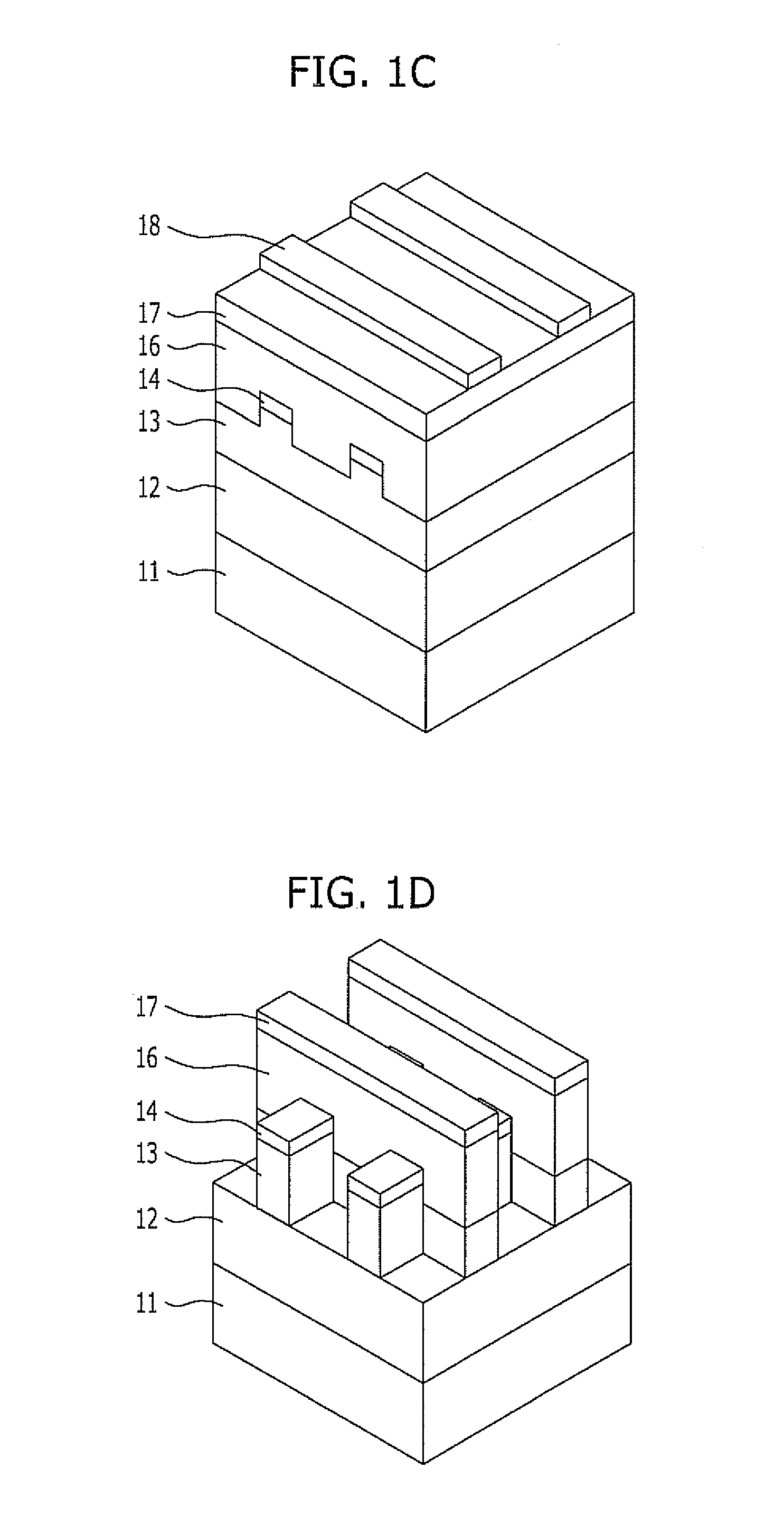Method for fabricating hole pattern in semiconductor device
a semiconductor device and hole pattern technology, applied in the direction of capacitors, electrical appliances, basic electric elements, etc., can solve the problems of difficult to reduce the size of a semiconductor chip, difficult to perform patterning using photoresist, and high equipment costs, so as to achieve the effect of securing a process margin and simplifying the patterning process
- Summary
- Abstract
- Description
- Claims
- Application Information
AI Technical Summary
Benefits of technology
Problems solved by technology
Method used
Image
Examples
first embodiment
[0018]FIGS. 1A to 1F are cross-sectional views illustrating a method for fabricating a hole pattern in a semiconductor device in accordance with a first embodiment of the present invention.
[0019]Referring to FIG. 1A, a hard mask layer 12, a first organic layer 13, and a first inorganic layer 14 are stacked over a layer 11 which is to be etched (hereinafter, referred to as an etch layer 11). The etch layer 11 may include a mold layer for forming a storage node and may be formed of oxide or polysilicon.
[0020]The hard mask layer 12 serves as an etch barrier for etching the etch layer 11. When the etch layer 11 is formed of oxide, the hard mask layer 12 may be formed of polysilicon, and when the etch layer 11 is formed of polysilicon, the hard mask layer 12 may be formed of oxide.
[0021]The first organic layer 13 is formed of carbon and may include an amorphous carbon layer. The first inorganic layer 14 serves as an etch barrier of the first organic layer 13 and serves to prevent reflect...
second embodiment
[0037]FIGS. 2A to 2K are cross-sectional views illustrating a method for fabricating a hole pattern in a semiconductor device in accordance with a second embodiment of the present invention.
[0038]Referring to FIG. 2A, a hard mask layer 22, a first organic layer 23, and a first inorganic layer 24 are stacked over an etch layer 21. The etch layer 21 may include a mold layer for forming a storage node and may be formed of oxide or polysilicon.
[0039]The hard mask layer 22 serves as an etch barrier for etching the etch layer 21. When the etch layer 21 is formed of oxide, the hard mask layer 22 may be formed of polysilicon, and when the etch layer 21 is formed of polysilicon, the hard mask layer 22 may be formed of oxide.
[0040]The first organic layer 23 is formed of carbon and may include an amorphous carbon layer. The first inorganic layer 24 serves as an etch barrier of the first organic layer 23 and serves to prevent reflection when a photoresist pattern is formed. The first inorganic ...
PUM
 Login to View More
Login to View More Abstract
Description
Claims
Application Information
 Login to View More
Login to View More - R&D
- Intellectual Property
- Life Sciences
- Materials
- Tech Scout
- Unparalleled Data Quality
- Higher Quality Content
- 60% Fewer Hallucinations
Browse by: Latest US Patents, China's latest patents, Technical Efficacy Thesaurus, Application Domain, Technology Topic, Popular Technical Reports.
© 2025 PatSnap. All rights reserved.Legal|Privacy policy|Modern Slavery Act Transparency Statement|Sitemap|About US| Contact US: help@patsnap.com



